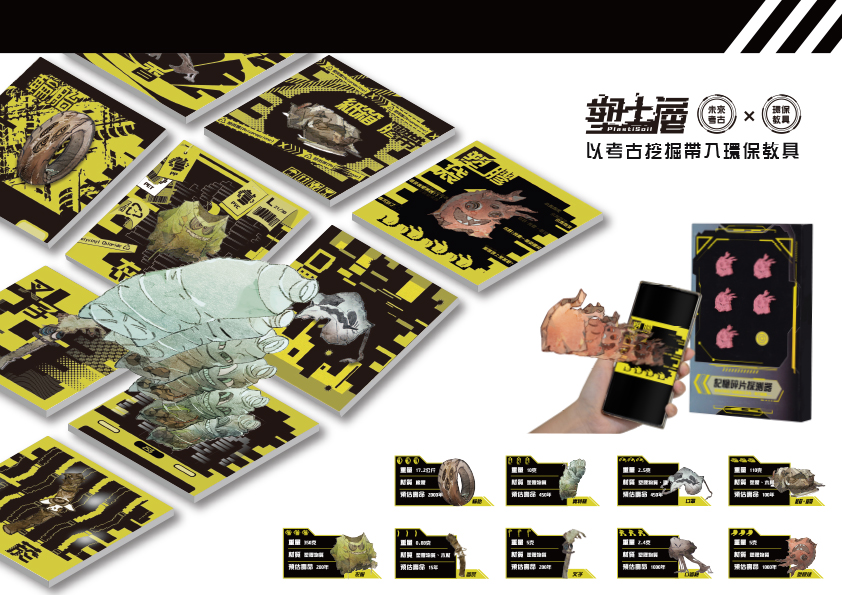
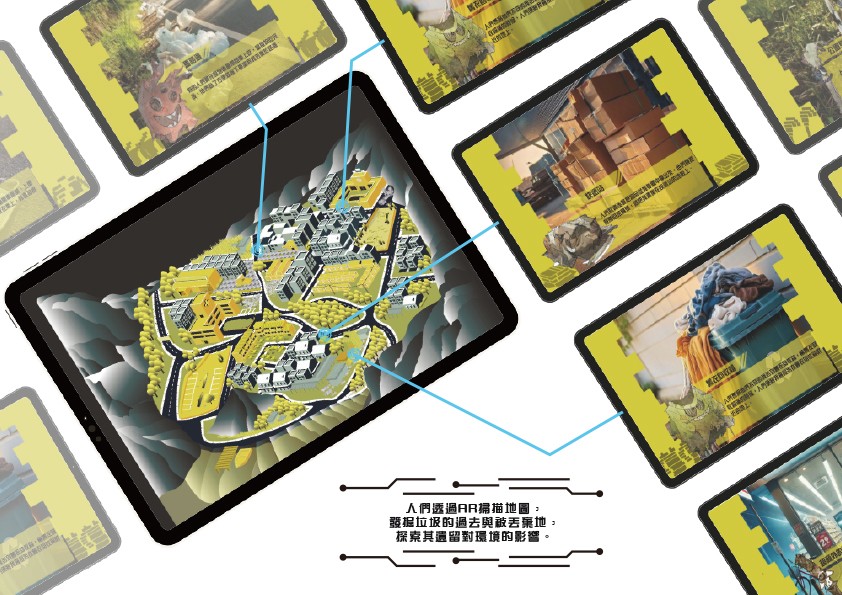
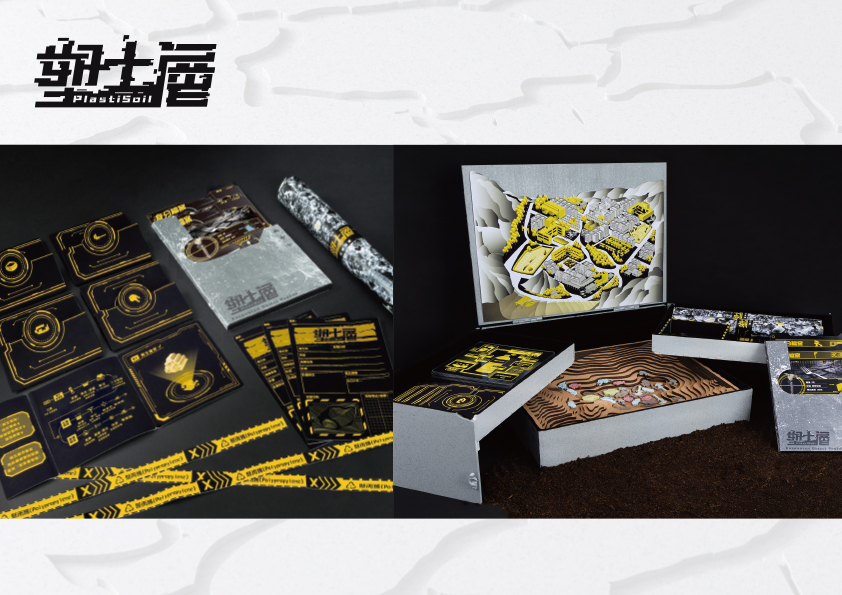
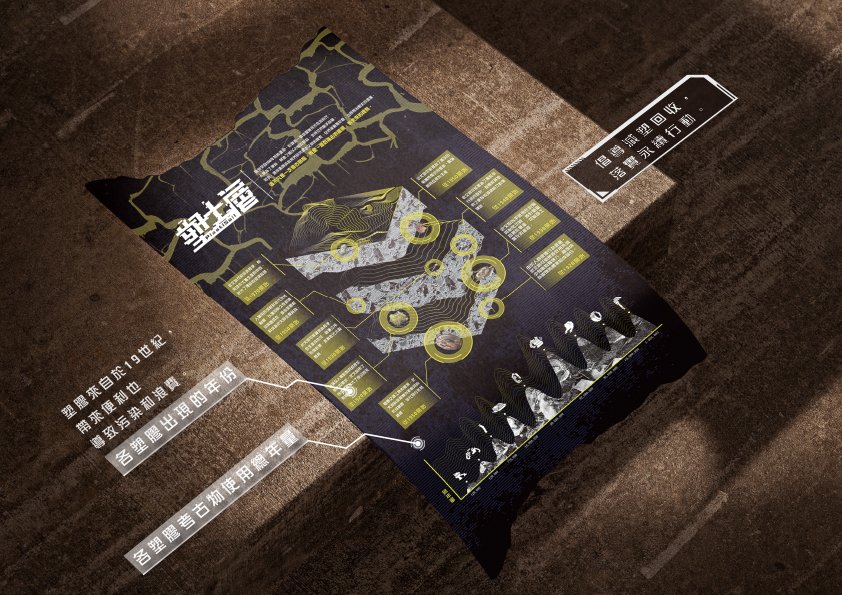
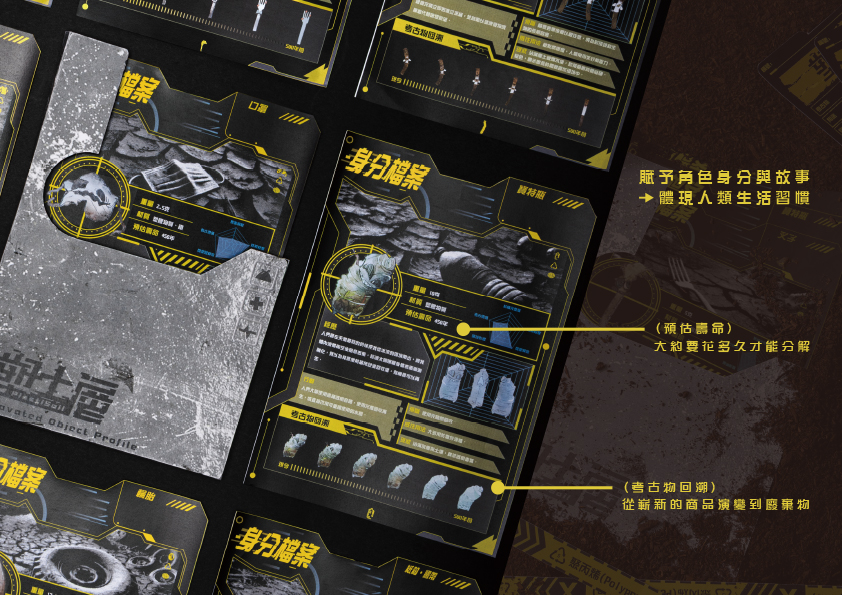
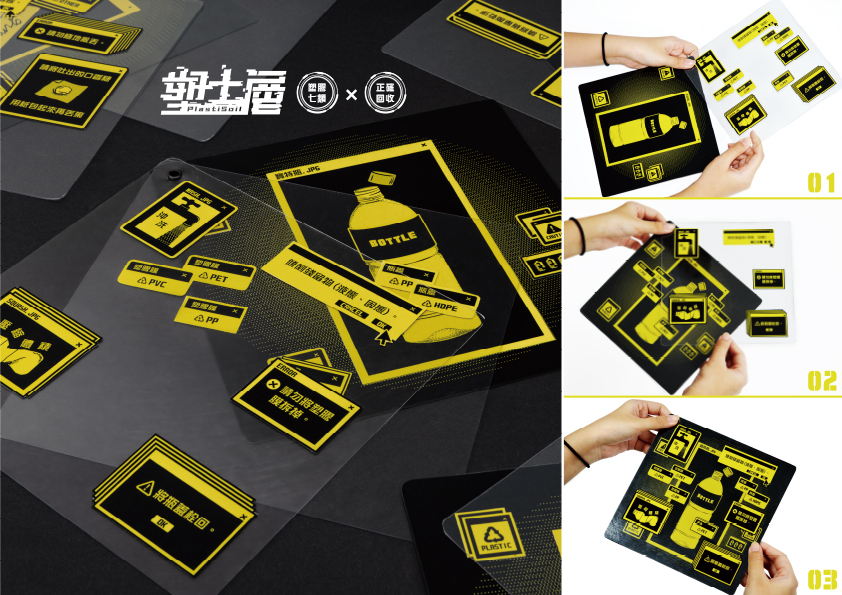
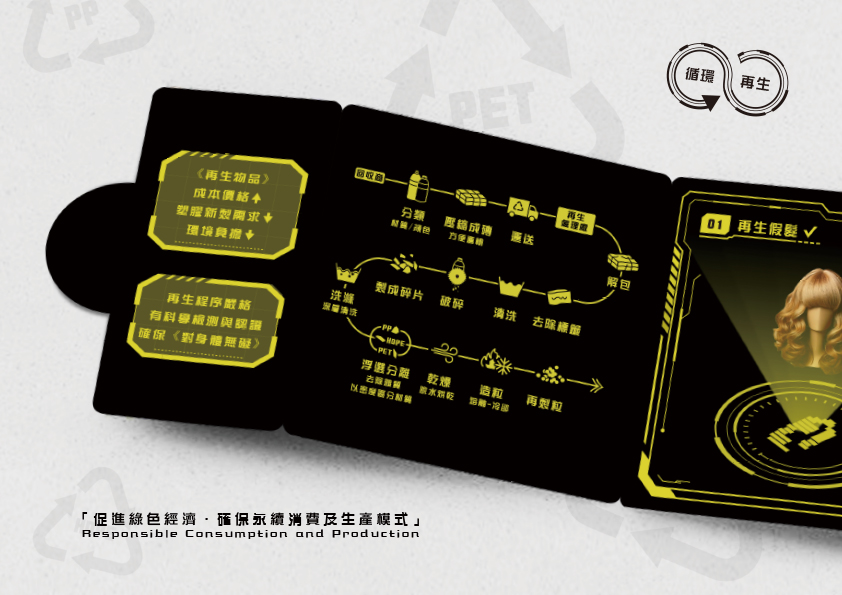
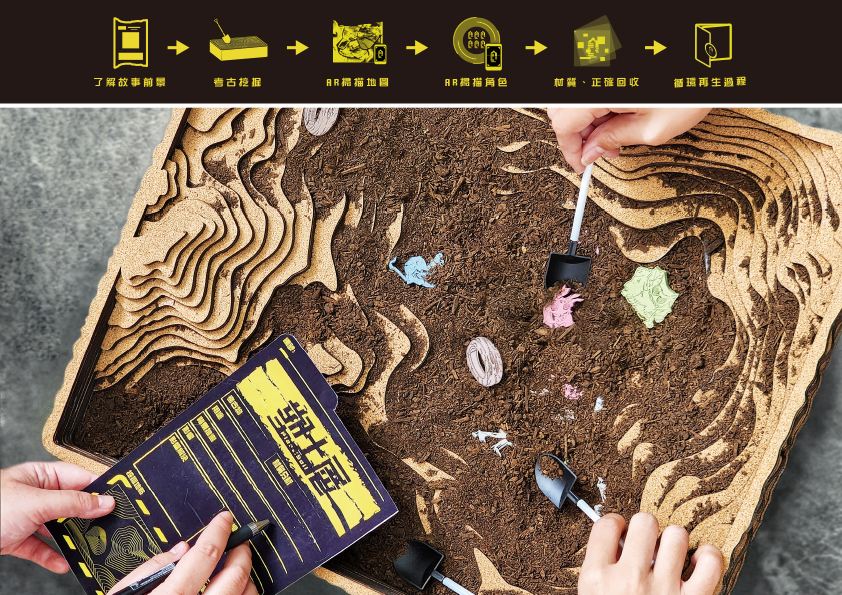
《塑土層》是一款結合AR技術與動手考古的互動式教具,透過遊戲化學習,帶領使用者探索塑膠污染與循環經濟的關聯。使用者將化身未來考古學家,挖掘地層中遺留的塑膠製品,並透過AR掃描了解這些塑膠從生產、使用到廢棄的完整歷程,進一步反思當代社會的消費與丟棄行為。塑膠帶來生活中的便利,卻因過度生產與不當丟棄,成為全球生態環境的重大威脅。塑膠難以自然分解,傳統的金屬或陶瓷文物等皆被替代,塑膠將可能成為未來唯一存留的考古遺物。這樣的視角,讓使用者直觀感受塑膠污染長遠的影響,並思考如何減少塑膠浪費、落實正確回收。本作品也呼應政府「生生用平板」數位教育政策,讓環保學習不再侷限於課堂,而是透過沉浸式互動,提升使用者的環保意識。使用者可藉由挖掘、辨識、掃描、學習,探索不同塑膠的材質與回收方式,進而理解循環經濟的運作,鼓勵實踐減塑、回收與再利用。此作品不僅是一款環保教育工具,更是一場行動倡導。我們希望透過數位科技與遊戲體驗,讓更多人關注塑膠污染,並將環保行動融入日常。
(運用AI 創作)ChatGPT:生成場景圖、再生物品圖、內文資料查詢。Adobe Express:生成場景圖、再生物品圖。
"PlastiSoil" is an interactive educational tool that combines AR technology with hands-on archaeology, using gamified learning to guide users in exploring the relationship between plastic pollution and the circular economy. Users will take on the role of future archaeologists, excavating plastic artifacts buried in the strata and using AR scanning to understand the complete lifecycle of these plastics—from production and usage to disposal—prompting reflection on contemporary consumption and waste behaviors.
While plastic has brought convenience to daily life, excessive production and improper disposal have made it a major threat to the global environment. Unlike traditional artifacts made of metal or ceramics, plastic does not decompose naturally. As a result, plastics may become the only remaining archaeological relics of the future. This perspective allows users to visually experience the long-term impact of plastic pollution and consider how to reduce plastic waste and implement proper recycling.
This project aligns with the government’s “Digital Learning for Every Student” policy, ensuring that environmental education extends beyond the classroom. Through immersive interactions, users can enhance their environmental awareness by excavating, identifying, scanning, and learning about different plastic materials and recycling methods. This experience fosters an understanding of the circular economy and encourages real-life practices in plastic reduction, recycling, and reuse.
"PlastiSoil" is not just an educational tool—it is a call to action. By integrating digital technology and interactive experiences, we aim to raise awareness about plastic pollution and inspire people to incorporate sustainable habits into their daily lives.
(Using AI for Creation)
ChatGPT: Generates scene illustrations, recycled product images, and content research.
Adobe Express: Generates scene illustrations and recycled product images.